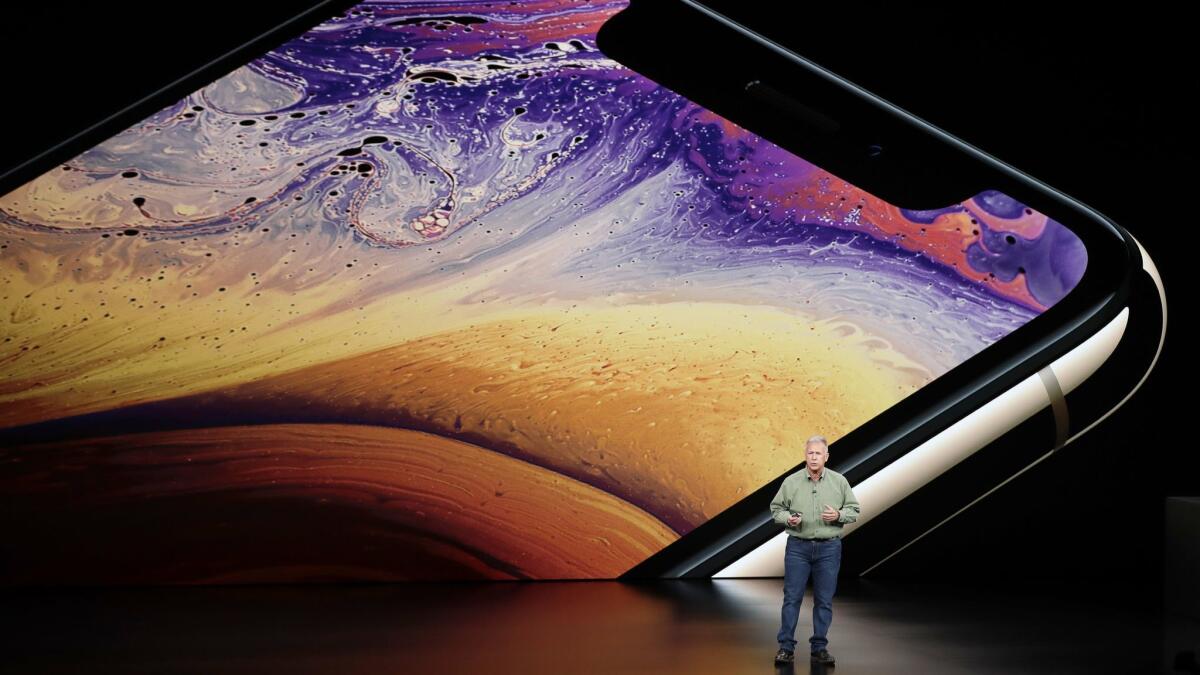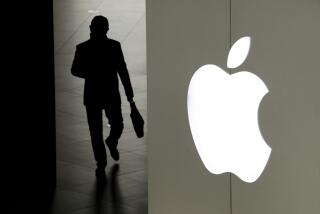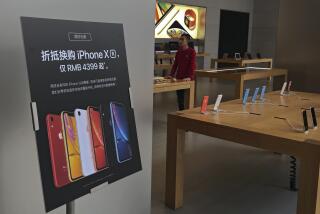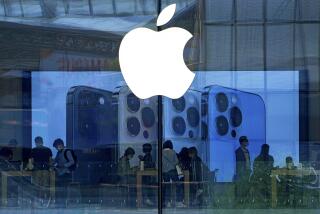Apple unveils big, $1,099 iPhone XS Max and pitches upgraded Apple Watch as health device

Apple Inc. took the wraps off a renewed iPhone strategy Wednesday, unveiling a trio of phones that aim to spread the company’s latest technology to a broader audience.
The iPhone Xs, starting at $999, succeeds last year’s flagship model with a faster A12 processor and updated cameras. The iPhone Xs Max is a higher-end version with a 6.5-inch OLED screen, making it one of the biggest on the market — and one of the most expensive, at $1,099 and up. For the first time there are 512-gigabyte storage options.
The third model, called the Xr, is Apple’s biggest hardware bet of 2018. It retains the key advances of the first iPhone X — facial recognition and an edge-to-edge display — but is cheaper while being noticeably larger, at 6.1 inches. The price starts at $749, roughly in line with most analysts’ expectations. Apple used older LCD screen technology and aluminum, rather than stainless steel, edges.
“We want to reach as many customers as we can with this incredible technology,” Apple marketing chief Phil Schiller said Wednesday during an event at Apple’s Cupertino, Calif., headquarters. The company’s stock slipped $2.78, or 1.2%, to $221.07.
When Apple introduced the iPhone X last year at a starting price of $999, some analysts doubted that people would pay so much. But it has been the company’s bestselling smartphone. Now Apple is making the core features available on a range of devices that appeal to different budgets.
The iPhone Xs and Xs Max will be available to pre-order Friday and hit shelves Sept. 21, Apple said. Pre-orders for the iPhone Xr start Oct. 19, and the phone will be in stores Oct. 26.
The variety of models shows how the company is adjusting its strategy. Rather than attracting millions of new iPhone users, Apple’s goal these days is to steadily raise average prices while expanding the total number of active devices to support sales of accessories and digital services such as iCloud storage, streaming music and video.
At Wednesday’s event, Apple also unveiled a new Apple Watch with a larger screen and new health capabilities. This week, it signed two deals for movies to stream via an upcoming online video service.
Wall Street has embraced Apple’s evolution from a consumer hardware company into a more diversified technology giant with an installed base of 1.3 billion devices supporting a growing roster of digital services. The stock has jumped more than 30% this year, making Apple the first public company worth $1 trillion. On Tuesday, UBS raised its price target to $250, saying that a growing stream of recurring revenue from services and other offerings deserves a higher valuation than the more cyclical hardware business.
The iPhone is still Apple’s most important product, generating about two-thirds of its revenue. Although global smartphone market growth has stalled, Apple has kept revenue rising by lifting average selling prices. The three new iPhones have an average starting price of $949. The iPhone average starting price was $724 in the most recent quarter.
Worldwide smartphone sales grew just 2% in the April-through-June quarter compared with a year earlier, according to research firm Gartner Inc. During the second quarter, which is typically slow for Apple, China’s Huawei Technologies surpassed Apple as the second-largest seller of smartphones, based on Gartner’s calculations. Samsung remained in the lead.
Apple Watch Series 4
The Apple Watch upgrades announced Wednesday are the most significant since the device first went on sale in 2015, turning the product into more of a health-monitoring device.
The new version, called Apple Watch Series 4, has larger screens that fit into the same overall watch sizes, and new health sensors and apps such as an electrocardiogram, or ECG, monitor. It also includes a faster dual-core processor called the S4, Apple said.
Apple Chief Operating Officer Jeff Williams described the latest Watch as an “intelligent guardian of your health,” noting that Apple got clearance for the ECG app from the U.S. Food and Drug Administration, the first of its kind.
The Watch has more-powerful sensors so it can spot when someone has a hard fall. It delivers an alert and calls emergency services if the user doesn’t move for one minute after a fall, Williams said. The ECG capability, available later this year, helps the device sense atrial fibrillation, an irregular heart rate that can increase the risk of stroke, heart failure and other heart-related complications.
“The FDA worked closely with the company as they developed and tested these software products, which may help millions of users identify health concerns more quickly,” FDA Commissioner Scott Gottlieb said in a statement. Healthcare products on ubiquitous devices, such as smartwatches, may help users seek treatment earlier and empower them with more information about their health, he said.
The new Watch line starts at $399, Apple said, compared with the $329 starting price of last year’s model. The device has 50% louder speakers, improving interaction with the Siri digital assistant. The back of the Watch lets more cellular signals through, making calls clearer. Battery life remains the same. Pre-orders start Friday, and the device hits stores Sept. 21.
Shares of Fitbit Inc., the maker of popular fitness devices, fell nearly 7% after Apple began unveiling its Watch plans.
The Apple Watch hasn’t been a monster hit like the iPhone, but it’s the world’s bestselling smartwatch and is helping Apple expand healthcare-related services. The Watch is part of the company’s Other Products segment, whose revenue jumped 37% to $3.74 billion in the fiscal third quarter. Apple shipped 4.7 million watches in that period, beating rivals such as Xiaomi Corp. and Fitbit, according to IDC.
The announcement of the new Watch line comes just days after Apple said in a letter to the U.S. government that proposed tariffs on goods imported from China could raise the price of Apple Watches and other Apple products.
Gurman writes for Bloomberg. The Associated Press was used in compiling this report.
UPDATES:
2:35 p.m.: This article was updated with Apple shares’ closing price, pre-order and release dates for the iPhones and Apple Watch, and additional information about the Apple Watch.
1:15 p.m.: This article was updated throughout with pricing and other information about the iPhones.
11:35 a.m.: This article was updated throughout with product announcements and context.
This article was originally published at 10:05 a.m.






